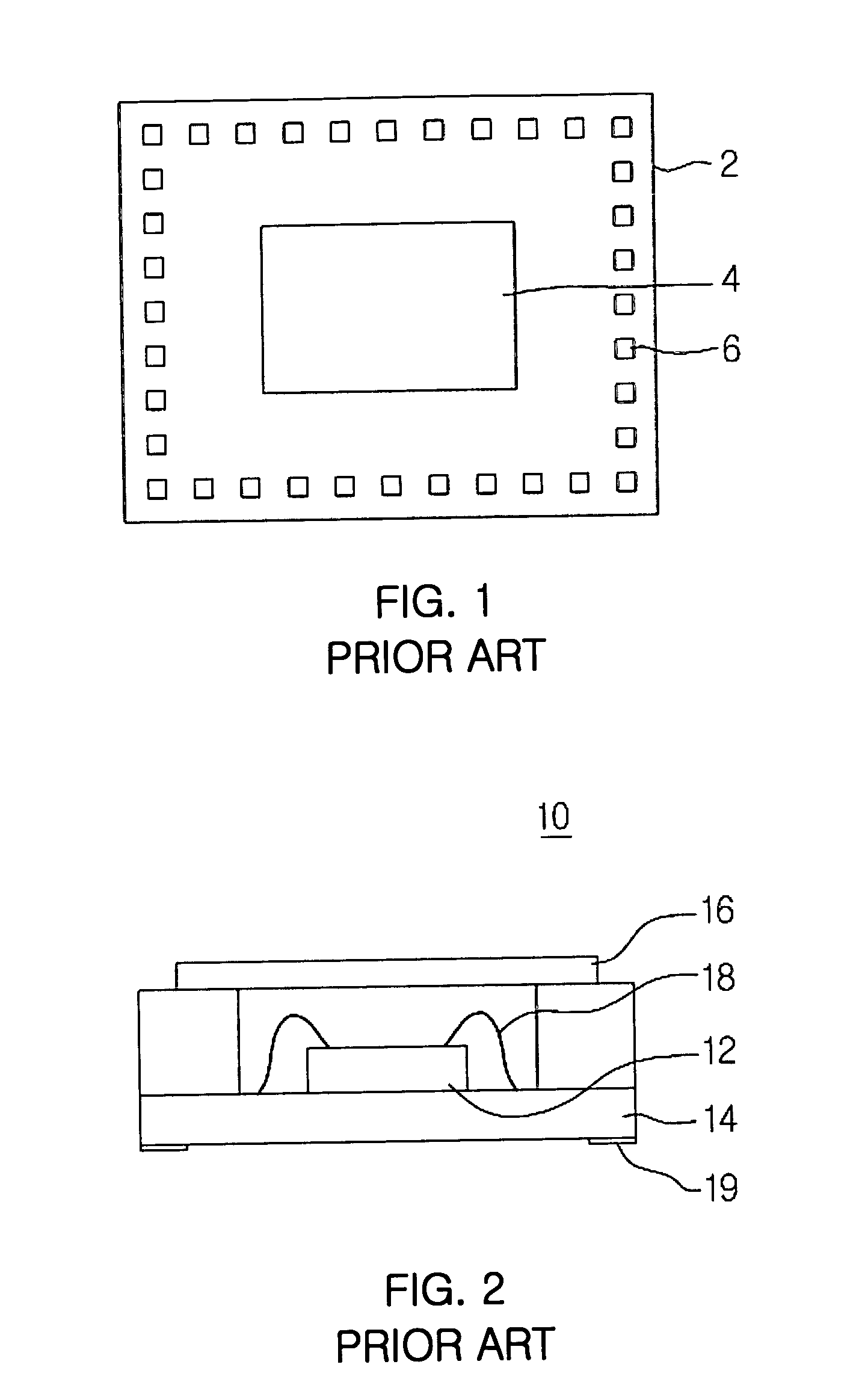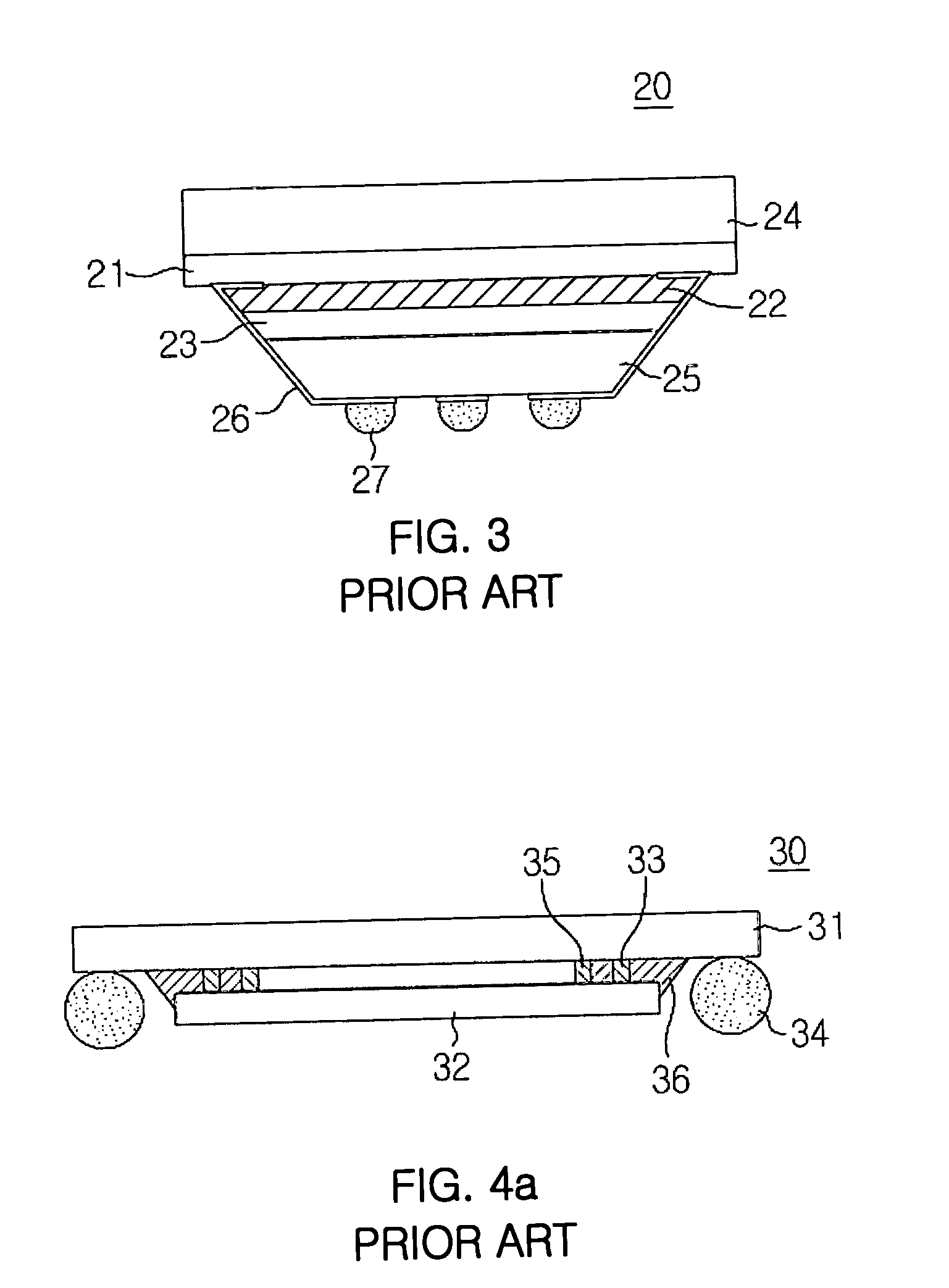Electronic package for image sensor, and the packaging method thereof
a technology of image sensor and electronic packaging, which is applied in the direction of semiconductor devices, semiconductor/solid-state device details, radiation control devices, etc., can solve the problems of insufficient size of the package, and inability to meet the requirements of hand-held applications such as cellular phones, and achieves a simple and convenient use. , the effect of high cost-effective sealing techniqu
- Summary
- Abstract
- Description
- Claims
- Application Information
AI Technical Summary
Benefits of technology
Problems solved by technology
Method used
Image
Examples
Embodiment Construction
[0070] An electronic package 40 formed in accordance with one exemplary embodiment of the present invention, is schematically illustrated in FIGS. 5a and 5b. The package 40 includes an image sensor die 42, which is formed with at least one image sensing area 44. The image sensor die 42 includes electrical terminals, preferably in the form of so called “bonding pads” about a peripheral area thereof. The image sensor die 42 further includes solder bump pads 48 that are electrically connected to the bonding pads. The image sensor die 42 also includes a solder sealing ring pad(s) 50 formed substantially about the image sensing area.
[0071] The electronic package 40 of the present invention, as shown in FIGS. 5a and 5b, additionally includes a substrate 60. The substrate 60 is formed of a material having substantial transparency in the range of wavelengths of light that the image sensor detects. The substrate is provided with at least one patterned metal layer 62 and at least one pattern...
PUM
 Login to View More
Login to View More Abstract
Description
Claims
Application Information
 Login to View More
Login to View More - R&D
- Intellectual Property
- Life Sciences
- Materials
- Tech Scout
- Unparalleled Data Quality
- Higher Quality Content
- 60% Fewer Hallucinations
Browse by: Latest US Patents, China's latest patents, Technical Efficacy Thesaurus, Application Domain, Technology Topic, Popular Technical Reports.
© 2025 PatSnap. All rights reserved.Legal|Privacy policy|Modern Slavery Act Transparency Statement|Sitemap|About US| Contact US: help@patsnap.com



